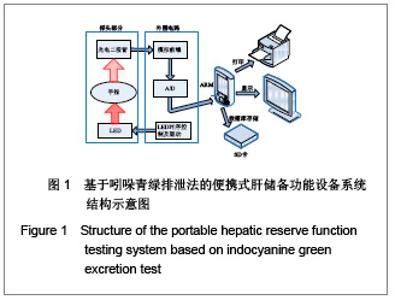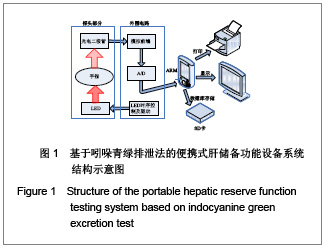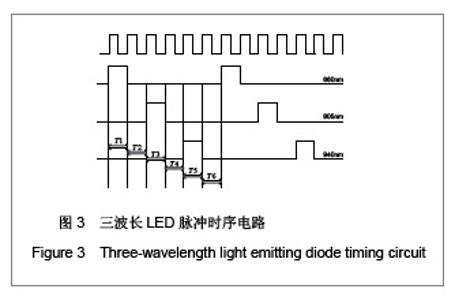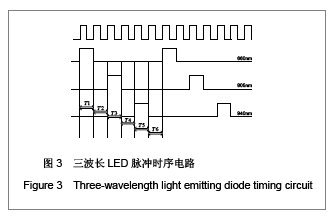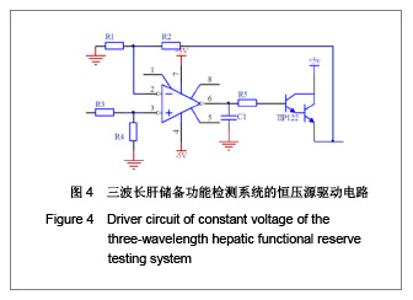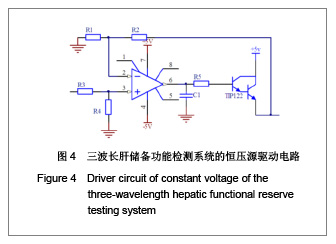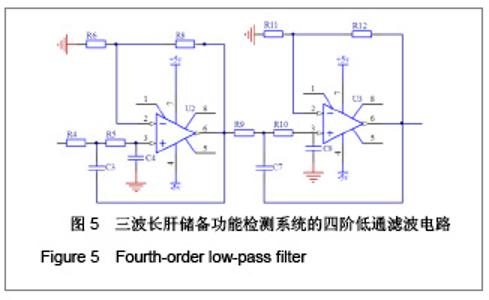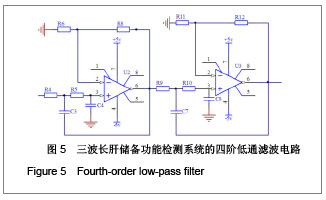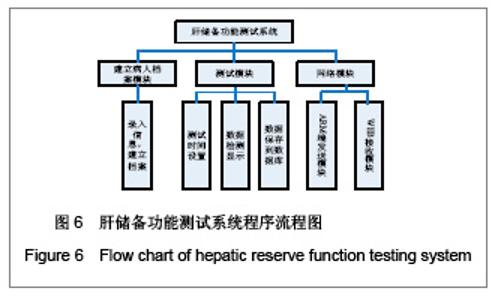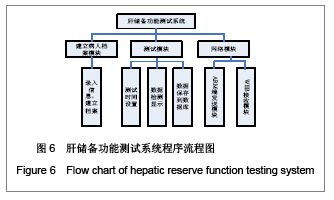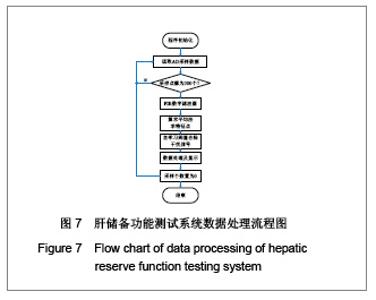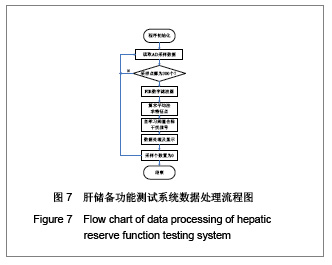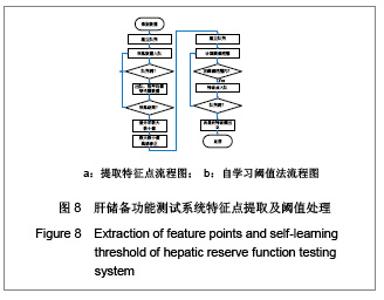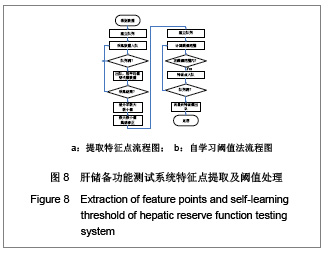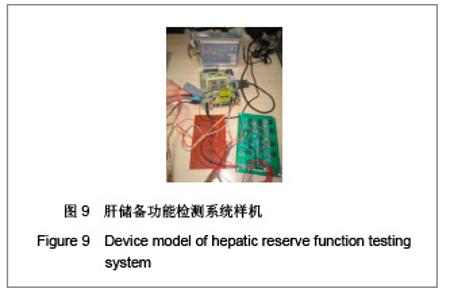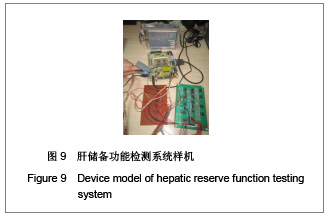Chinese Journal of Tissue Engineering Research ›› 2013, Vol. 17 ›› Issue (5): 902-906.doi: 10.3969/j.issn.2095-4344.2013.05.021
Previous Articles Next Articles
Insight into the three-wavelength hepatic reserve function detection system
徐泽鹏,马腾飞,李凯扬
- Department of Electronic Science and Technology, School of Physics, Wuhan University, Wuhan 430072, Hubei Province, China
-
Received:2012-07-08Revised:2012-07-29Online:2013-01-29Published:2013-01-29 -
Contact:Li Kai-yang, Doctor, Professor, Department of Electronic Science and Technology, School of Physics, Wuhan University, Wuhan 430072, Hubei Province, China lky@whu.edu.cn -
About author:Xu Ze-peng★, Master, Department of Electronic Science and Technology, School of Physics, Wuhan University, Wuhan 430072, Hubei Province, China wdxzp1988@126.com
CLC Number:
Cite this article
徐泽鹏,马腾飞,李凯扬. Insight into the three-wavelength hepatic reserve function detection system[J]. Chinese Journal of Tissue Engineering Research, 2013, 17(5): 902-906.
share this article
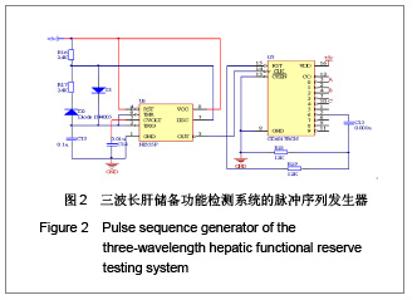
2.1 探头部分 本系统光源选择波长为660,805, 940 nm的LED,选择epitex公司的L660/805/940- 35B42,该LED将3个波长的LED封装到一个光源中,可以大大减少探头的体积,并保证每个LED被光电二极管接收范围一致。在人体信号的提取、处理过程中,会有比较多的干扰信号,因此系统选择了BB公司的光电传感器OPT101,其最大的优点是集成了前置放大滤波单元,光电二极管和互跨阻抗放大器在一片单片上的集成和结合可以消除分立设计中通常出现的问题,如漏电流误差,噪声交叉干扰和由于杂散电容引起的增益峰化,OPT101对于660,805,940 nm的光具有较高的灵敏性,可以将光信号有效的转换为电信号[12]。 2.2 外围电路部分 2.2.1 LED时序控制和驱动 系统利用NE555芯片和计数译码器CD4017组成的脉冲信号发生及分配电路作为LED的时序控制电路,产生频率50 Hz,占空比为1/6的脉冲,见图2。依次循环产生660 nm->暗光- >805 nm->暗光->940 nm->暗光。LED点亮和熄灭的工作时序,见图3。其中T1、T3、T5分别表示660,805,940 nm LED点亮时间,而T2、T4、T6表示暗光时间,所有时间均相等。"
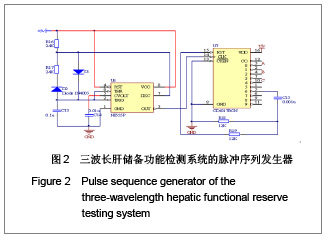

4 结论与展望 本文对基于吲哚青绿排泄试验的肝储备功能检测系统的各个模块进行了详细介绍,对比实验验证效果良好。该系统可以无创、实时的提供吲哚青绿15 min滞留率以及血氧饱和度等人体信息,系统采用3波长LED照射手指,并利用光电传感器采集透过手指的光强,软件方面采用数字滤波器及自学习阈值法去除干扰信号。这种用于手指的便携式肝储备功能检测系统在医院和家庭的检测和监护中具有非常广阔的应用前景,进一步改进和完善之后,将与临床结合,完成该系统测量值的精确标定,以达到医学测量的精准度要求。 基金资助:武汉市“3551人才计划”项目资助(项目编号:武新管[2010]210号)。 作者贡献:第一作者进行实验设计,第一二作者共同实施,第三作者进行实验评估,第一作者收集、成文,第三作者审校,第一作者对文章负责。 利益冲突:课题未涉及任何厂家及相关雇主或其他经济组织直接或间接的经济或利益的赞助。 伦理要求:课题未涉及任何伦理学内容。 作者声明:文章为原创作品,数据准确,内容不涉及泄密,无一稿两投,无抄袭,无内容剽窃,无作者署名争议,无与他人课题以及专利技术的争执,内容真实,文责自负。"

| [1] Chen XY, Yin BB. Guowai Yixue:Waikexue Fenxe. 2005;32(2): 97-101. 陈学颖,殷保兵.肝脏储备功能的评估方法及意义[J].国外医学:外科学分册,2005,32(2):97-101. [2] Miyasaka K.Do we really know how pulse oximetry works? J Anesth.2003;17(4):216-217. [3] Takuo Aoyagi.Pulse oximetry:its invention, theory, and future. J Anesth.2003;17(4):259-266. [4] Yao F, Qiao XY, Dong YE. Shanxi Daxue Xuebao. 2010;33(1): 92-96. 姚峰,乔晓艳,董有尔.基于LabVIEW的无创脉搏血氧检测系统设计[J].山西大学学报,2010,33(1):92-96. [5] Zhang L, Tang F, Wang XJ, et al. Xiandai Dainzi Jishu. 2011; 34(21):138-140. 张良,唐飞,王晓浩,等.无创血氧饱和度检测仪的设计[J].现代电子技术,2011,34(21):138-140. [6] Ding HS, Teng YC. Jiguang Yu Guangdianzixue Jinzhan. 2007; 44(9):14-31. 丁海曙,腾轶超.组织血氧参数近红外无损检测技术及自主创新之路[J].激光与光电子学进展,2007,44(9):14-31. [7] You CB, Liu XS, Yan L. Kexue Jishu yu Gongcheng. 2008; 8(13):3441-3443,3454. 游荐波,刘希顺,闫凌.基于C8051F021单片机的血氧饱和度测量仪的研制[J].科学技术与工程,2008,8(13):3441-3443,3454. [8] Fan SC, Guo XY. Weina Dianzi Jishu. 2007;44(7):342-344. 樊尚春,郭欣悦.基于CMOS影像传感器的血氧饱和度监测系统[J].微纳电子技术,2007,44(7):342-344. [9] Wang T, Li ZY. Jishu yu Shichang. 2011;8(9):10-11. 王婷,李志园.基于MATLAB的血氧饱和度的模拟检测[J].技术与市场,2011,8(9):10-11. [10] Liu SL, Li XM, Yu TL. Zhongguo Yiliao Shebei. 2011;26(11):85-86. 刘士龙,李晓梅,于天林.血氧饱和度仪器的测量原理与应用维护[J].中国医疗设备,2011,26(11):85-86. [11] Chen R, Xie SS, Chen YJ, et al. Shengwu Yixue Guangzixue. 2002;13(1):92-93,97. 陈荣,谢树森,陈艳娇,等.中国人血液的组织光学参数[J].生物医学光子学,2002,13(1):92-93,97. [12] Iijima T, Aoyagi T, Iwao Y, et al. Cardiac output and circulating blood volume analysis by pulse dye-densitometry. J Clin Monit. 1997;13(2):81-89.[13] Du ZG, Li B, Feng X, et al. Zhongguo Puwai Jichu yu Linchuang Zazhi. 2009;16(2):133-136. 杜正贵,李波,冯曦,等.脉搏染料光密度法吲哚氰绿排泄试验对评价肝癌切除术后肝功能不全的价值[J].中国普外基础与临床杂志,2009,16(2):133-136. [14] Gao LJ, Liu Y, Meng XF. Zhongguo Xiandai Putong Waike Jinzhan. 2011;14(4):292-295. 高丽杰,刘毅,孟翔飞.脉搏染料光密度法评估肝储备功能的临床研究[J].中国现代普通外科进展,2011,14(4):292-295.[15] Yang J, Li JS, Ying WD, et al. SHiyong Ganzangbing Zazhi. 2009;12(1):38-40. 杨洁,李建生,英卫东,等.吲哚青绿排泄实验评估肝储备功能的临床研究[J].实用肝脏病杂志,2009,12(1):38-40. |
| [1] | Yang Xin, Jin Zhe, Feng Xu, Lu Bing. The current situation of knowledge and attitudes towards organ, eye tissue, body donation of residents in Shenyang [J]. Chinese Journal of Tissue Engineering Research, 2021, 25(5): 779-784. |
| [2] | Cai Qiucheng, Fan Hongkai, Xiong Rihui, Jiang Yi. Intravenous administration of bone marrow mesenchymal stem cells protects liver function following fatty liver transplantation from donors after cardiac death [J]. Chinese Journal of Tissue Engineering Research, 2019, 23(17): 2625-2629. |
| [3] | Jiang Shanshan, Wang Feng, Yu Limei. Immunomodulatory properties of mesenchymal stem cells and their application in organ transplantation [J]. Chinese Journal of Tissue Engineering Research, 2019, 23(1): 103-109. |
| [4] | Gao Xi-xiang, Zhang Jian, Gu Yong-quan, Guo Lian-rui, Tong Zhu, Li Li-qiang, Li Jian-xin, Feng Zeng-guo. A new self-convertible inferior vena cava filter: in vivo experimental evaluation [J]. Chinese Journal of Tissue Engineering Research, 2018, 22(14): 2215-2220. |
| [5] | Gao Xi-xiang, Zhang Jian, Gu Yong-quan, Guo Lian-rui, Tong Zhu, Li Li-qiang, Li Jian-xin, Feng Zeng-guo. A new self-convertible inferior vena cava filter: in vitro experimental evaluation [J]. Chinese Journal of Tissue Engineering Research, 2018, 22(10): 1547-1552. |
| [6] | Liu Teng-fei, Zhou Jian-kang, Huang Tuan-jie, Xing Qu, Cheng Kang, Li Peng, Li Dong-peng, Yang Bo, Ma Shan-shan, Guan Fang-xia . MG53 protein protects against multiorgan ischemia/reperfusion injury: present and future [J]. Chinese Journal of Tissue Engineering Research, 2017, 21(20): 3248-3254. |
| [7] | Li Ling, Li Ning, Ai Zi-ye, Yao Ya-jun, Wei Wan-hui, He Wei-yang, Wang Yan-feng, Ye Qi-fa. Intra-patient variability of tacrolimus concentration in transplant recipients: a prognostic predictor post transplantation [J]. Chinese Journal of Tissue Engineering Research, 2016, 20(49): 7437-7422. |
| [8] | Lin Jing-xia, Su Fan, Luo Hong-shan. Transfusion of blood components in liver transplantation and abdominal multiple organ transplantation [J]. Chinese Journal of Tissue Engineering Research, 2016, 20(33): 4957-4962. |
| [9] | Dong Jian-hui, Li Hai-bin, Sun Xu-yong, Qin Ke, Liao Ji-xiang, Li Mei-si, Huang Xiao-dan, Huang Chen, Huang Ying, Cao Song, Gao Zhao, Li Zhuang-jiang, Nie Feng, Yang Jian-jun. Clinical effects of renal transplantation with kidneys from donors dying of organophosphate poisoning [J]. Chinese Journal of Tissue Engineering Research, 2016, 20(29): 4311-4318. |
| [10] | Zhang Wen-xin, Teng Sha, Peng Xiao, Lin Xiao-hong, Liu Hong-xia. Systematic review of the effects of education on medical students’ knowledge and attitudes toward organ donation and transplantation [J]. Chinese Journal of Tissue Engineering Research, 2015, 19(5): 810-814. |
| [11] | Hu Xiao-yan, Wang Yan-feng, Ye Qi-fa, Chen Zhi-quan, Fan Xiao-li, Guo Yi, Li Ning. Effects of hypothermic machine perfusion versus static cold storage of kidney allografts on transplant outcomes: a Meta-analysis [J]. Chinese Journal of Tissue Engineering Research, 2015, 19(42): 6882-6888. |
| [12] | Zhang Li-ping, Bai Jian. Cytomegalovirus nosocomial infection following organ transplantation: detection and monitoring [J]. Chinese Journal of Tissue Engineering Research, 2015, 19(20): 3258-3263. |
| [13] | Cao Cui-ping, Huang Hai. Construction strategy of human organ donation social mission system in China [J]. Chinese Journal of Tissue Engineering Research, 2015, 19(2): 300-304. |
| [14] | Wang Tao, Hao Wen-jing, Zong Huan-tao, Zhang Yong. Efficacy and safety of alemtuzumab, daclizumab and antithymocyte globulin in kidney transplantation [J]. Chinese Journal of Tissue Engineering Research, 2015, 19(2): 305-309. |
| [15] | Yao Jia, Li Xiao-jun, Cui Xiao-hai, Zhao Yang, Zhang Jing, Li Gang, Cao Pei-long. Correlation of survival time and C-reactive protein after artificial tracheal replacement in rabbits [J]. Chinese Journal of Tissue Engineering Research, 2014, 18(5): 718-723. |
| Viewed | ||||||
|
Full text |
|
|||||
|
Abstract |
|
|||||








